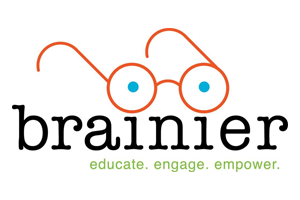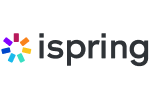For organizations looking to optimize their customer training programs, learning management system (LMS) reporting features are a transformative tool.
These features offer a clear view of customer training and provide valuable data on every crucial aspect of an organization’s training programs. This data empowers continuous improvement of training initiatives so that learners’ needs are consistently met.
This article takes a closer look at how LMS reporting features work to transform customer training processes.
How LMS Reporting Features Can Revolutionize Customer Training
Here are some of the most effective ways LMS reporting tools can be used to improve customer training:
Setting goals and identifying data:
Using LMS reporting tools, you can set clear training objectives for your business and link them to specific, measurable metrics.
This approach allows you to track many different indicators of success, like the number of users completing specific courses, their quiz scores, the time spent on particular modules, and feedback from post-training surveys. These valuable metrics all help you gauge what participants learned and how much of the information they retained.
Tracking customer engagement:
With LMS reporting, you can better understand how customers learn from their training programs. It tracks data like how often customers access training, how much of it they complete, and how long they spend on each section.
Tracking engagement metrics enables you to identify trends and patterns that can inform future training programs and drive continuous improvement.
Assessing learner progress:
With the help of an LMS, businesses can also track how each customer progresses through the training. By examining quiz scores and assessment results, you can easily gauge how well customers grasp the current training material.
Identifying training gaps:
LMS reporting is a powerful tool for pinpointing areas where customers are having difficulty in their training journey. One way to spot these challenges is to analyze assessment and quiz metrics, looking for those topics that have consistently low scores or completion rates.
This gives clear insight into which topics are causing confusion among learners. From here, organizations can develop targeted training interventions that tackle these knowledge gaps.
Personalizing training experiences:
LMS reporting helps identify individual users struggling with specific modules. This gives you an opportunity to offer alternative learning resources, shifting customer training from a one-size-fits-all approach to a more tailored experience.
Monitoring customer success:
The significance of customer training extends beyond just completing tasks. Its true purpose is to equip customers with valuable knowledge that they can apply practically.
Tracking customer satisfaction through surveys, monitoring customer support ticket volume — and even tracking product usage after completing training programs — helps you assess whether customers are applying their newfound knowledge effectively.
Predicting future training needs:
Advanced LMS reporting tools analyze trends and patterns in training data to predict future training needs.
This predictive analysis helps organizations like yours stay ahead of skills gaps, evolving industry standards, or technological advancements by updating your training programs proactively.
Guaranteeing legal compliance:
In industries where regulations and certifications are vital, LMS reporting is key for tracking the completion of essential training and certification programs.
This shows that all customers meet the necessary standards and provides proof of compliance. By doing so, businesses can mitigate legal risks and instill confidence in their customers, fostering positive relationships.
Optimizing training delivery methods:
Finally, with the help of LMS reporting tools, businesses can determine the most effective method of delivering training material.
For instance, you can deduce whether self-paced online modules, instructor-led webinars, or blended learning approaches are best for your customers. This optimization ensures that training is delivered in a way that keeps learners engaged and helps them retain the information they’ve learned.
The Key Takeaway
Leveraging the power of LMS reporting features is essential for organizations looking to boost their customer training programs.
By tapping into these tools, you can tailor training experiences to individual needs, track learner progress, identify areas for improvement, guarantee regulatory compliance, and much more.
Ultimately, integrating customer training LMS reporting transforms training into a data-driven, personalized, and effective process that drives continuous improvement and empowers learners to succeed.








